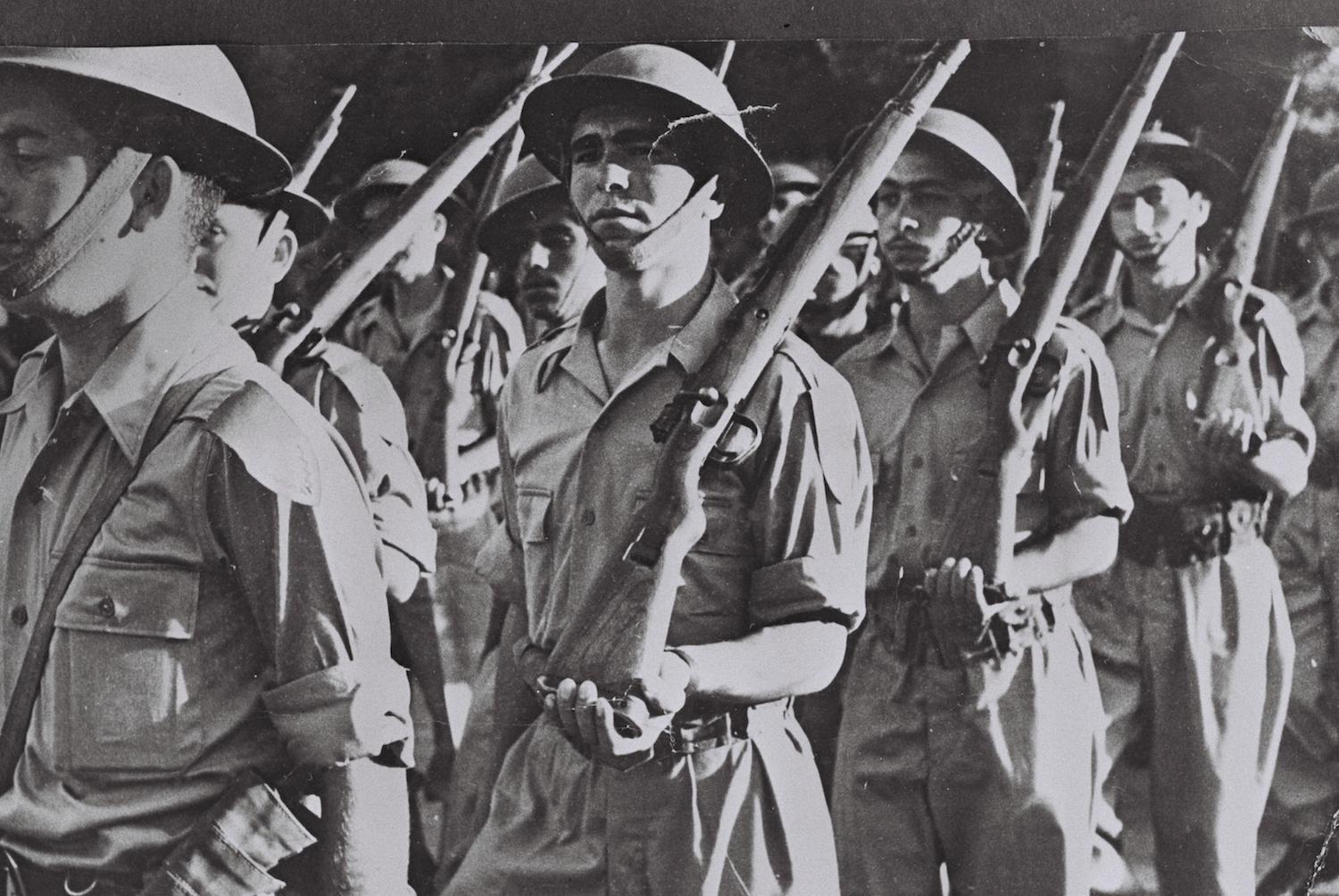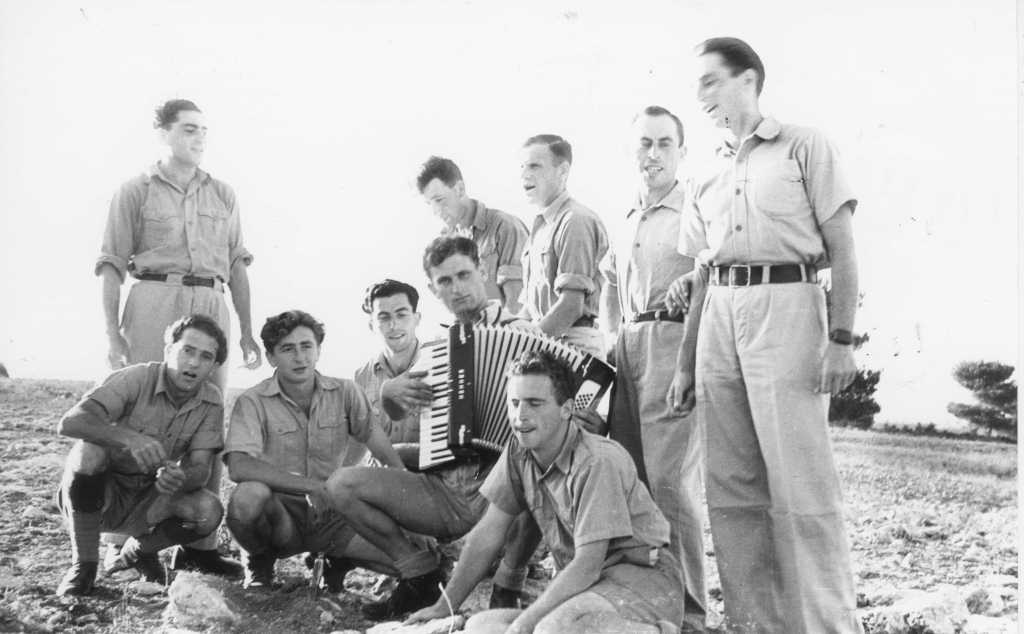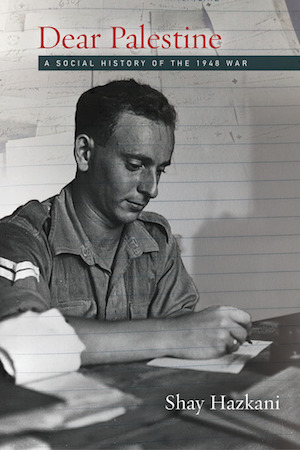Tom Pessah : Chi ha combattuto nel 1948? Un libro sfata l'usuale narrazione
Fonte: rivista online ebraica israeliana
Un nuovo libro scopre le lettere di combattenti ebrei e arabi della guerra del 1948, mettendo in evidenza le vite personali di coloro che hanno combattuto per fondare Israele e di coloro che hanno cercato di difendere la Palestina.
Abdullah Dawud ,l'ebreo iracheno che ha combattuto con l'esercito di liberazione arabo
l 4 aprile 1948, poche settimane prima della formazione dello Stato di Israele, un soldato iracheno di nome Abdullah Dawud prese parte a un fallito attacco a un kibbutz nel nord della Palestina. Una delle battaglie chiave di questo periodo, l'attacco durò quasi due settimane, coinvolse l'artiglieria pesante e si concluse con un totale di 115 vittime . Dawud, un cecchino, era uno delle migliaia di volontari provenienti da tutto il mondo arabo che componevano l'Esercito di liberazione arabo (ALA), ed aveva effettuato l'assalto.
Nel 1990, la giornalista israeliana Sarah Leibovitz-Dar ha intervistato Dawud sul suo servizio nell'ALA; cinque decenni dopo, l'ex soldato era ancora orgoglioso della sua abilità come cecchino. "Ero un così grande soldato", si vantò, "che il mio ufficiale, Husayn mi disse: Abduallah, peccato che tu sia ebreo". Aviv: Dawud, che in effetti era ebreo, immigrò in Israele nel 1950, appena due anni dopo aver combattuto contro il nascente esercito israeliano
La storia di Dawud apre “Dear Palestine: A Social History of the 1948 War”. Un libro prezioso di lettere scritte da soldati dell'esercito israeliano, dell'ALA e da civili palestinesi durante la guerra. Queste lettere furono segretamente intercettate e copiate dall'ufficio di censura israeliano per valutare l'opinione pubblic e ,non intenzionalmente , conservate per futuri storici. Il libro attinge anche agli opuscoli di propaganda dell'epoca.
Se l'ebraicità di Dawud sembra sorprendente, è probabilmente per quello che il sociologo Ulrich Beck chiama “nazionalismo metodologico”: si possano dedurre le motivazioni degli individui dalle nazionalità/etnie di appartenenza. Per molti ebrei contemporanei questo si traduce nell'aspettativa che i volontari e i soldati arabi fossero in gran parte motivati dall'antisemitismo e ciò giustificasse le azioni di guerra del governo e dell'esercito israeliani dell'epoca. Inoltre è probabile che i lettori proiettino la presunta attrazione dei Mizrahim (ebrei con origini in paesi arabi o musulmani) per la destra ultranazionalista di Israele sui soldati Mizrahi del 1948.

Il libro di Hazkani offre tre sfide chiave a questo nazionalismo metodologico in relazione alla storia israelo-palestinese
. Il primo di questi è nel regno della propaganda contemporanea. Hazkani osserva che la produzione dell'ALA "era più misurata, meno violenta e poneva una maggiore enfasi sui valori universali e sul diritto internazionale" di quella dell'IDF, i cui opuscoli paragonavano il nemico arabo ad Amalek. David Ben Gurion, il primo ministro israeliano, utilizzò questa analogia, segnando una rottura con secoli di commentatori ebrei che si guardarono bene dal paragonare Amalek a qualche gruppo contemporaneo. Al contrario, l'ALA prometteva che nel futuro stato arabo in Palestina "gli ebrei sarebbero vissuti come normali cittadini e avrebbero goduto di pieni diritti di cittadinanza".
L' ALA puntava ,come obiettivo strategico dell'organizzazione, a evitare la spartizione della Palestina , cercando di convincere gli ebrei che la loro ostilità verso gli arabi si sarebbe tradotta in un disastro per loro, di prevenire gli attacchi degli ebrei contro gli arabi e di non causare vittime [tra gli ebrei]. La propaganda dell'ALA non menzionava l'annientamento degli ebrei o il "buttarli in mare", come sosteneva all'epoca la propaganda israeliana.
Naturalmente, questa conclusione non prova in modo definitivo che gli eserciti arabi si siano astenuti dall'usare una retorica estrema o dal nutrire obiettivi più estremi, ma mina le accuse di antisemitismo diffuso e persino meccanico, chiarendo che non possiamo generalizzare citando Haj Amin al-Husseini, il Gran Mufti di Gerusalemme.
Critiche dei volontari dell'IDF alla società israeliana
Un'altra scoperta è l'entità delle critiche dei volontari dell'IDF nei confronti della società israeliana . Secondo un sondaggio del marzo 1949 dell'IDF Center for Research of Public Opinion, il cinquantacinque per cento di Mahal, l'unità di volontari stranieri dell'esercito (provenienti dai paesi occidentali), aveva opinioni negative su Israele e sui suoi cittadini.
Gran parte di queste critiche erano dirette alla corruzione e al comportamento irrispettoso. Martin, un ebreo americano, scrisse alla sua famiglia che "gli ebrei di Israele hanno scambiato la loro religione per una rivoltella". Richard, un soldato sudafricano, si rifiutava “di combattere per le ambizioni territoriali e imperialiste degli effendis sionisti [parola turca per notabili, usata ironicamente qui], anche se si definiscono socialisti. La leadership sionista sta istigando la guerra per espandere i confini di Israele. Creano volutamente un'atmosfera di guerra”.
D'altra parte, c'erano quelli come Tikva Honig-Parnass, una soldatessa del Palmach , che si lamentava con i suoi genitori di due volontari americani Mahal dal "cuore tenero". Anni dopo, Honig-Parnass avrebbe riconosciuto il suo ruolo nella guerra del 1948 e avrebbe parlato della Nakba .
Queste critiche probabilmente non erano condivise dalla maggior parte dei soldati, ma non erano insignificanti. Anche in relazione al coinvolgimento dell'esercito nell'espulsione dei palestinesi , le opinioni non erano così uniformi come si potrebbe immaginare in retrospettiva. Nell'aprile del 1948, il dipartimento dell'istruzione dell'esercito pubblicò un opuscolo intitolato "Risposte alle domande che i soldati fanno di frequente", che si apriva con il quesito : "Perché non accettiamo il ritorno dei rifugiati arabi durante la pausa [nei combattimenti]" L'importanza della questione dimostra, nell'interpretazione di Hazkani, quanto fosse diffusa tra i soldati stessi.
Anche dopo la guerra, nel 1949, più di un quarto dei residenti di Tel Aviv sostenne il ritorno dei profughi palestinesi, secondo un sondaggio dell'IDF Center for Research of Public Opinion. Oggi il ritorno è considerato quasi un argomento tabù, mai discusso sui media o tra i partiti politici ebraici. È quindi interessante notare che l'opinione contemporanea, nonostante l'alto prezzo pagato dalla società israeliana in una guerra appena conclusa, considerasse legittima la questione del ritorno dei palestinesi.
Razzismo e Mizrahim
L'ultima sfida del libro al nazionalismo metodologico riguarda i soldati ebrei dei paesi arabi. Le condizioni del tempo di guerra non hanno portato all'unità e alla solidarietà, ma piuttosto a una maggiore sensibilità nei confronti del razzismo anti-Mizrahi. Questo forse potrebbe sorprendere coloro che oggi vedono i Mizrahim in Israele come emblemi dell'ipernazionalismo.
Naim, un soldato nordafricano, scrisse alla sua famiglia :“gli ebrei europei che hanno sofferto tremendamente a causa del nazismo hitleriano ,considerano se stessi una razza superiore e i sefarditi come appartenenti a una razza inferiore. Il povero africano è ora umiliato ad ogni angolo”.
Maimun, un altro soldato nordafricano, ha spiegato alla sua famiglia :“E' meglio mangiare pane secco in Marocco che polli qui. Devi sapere che gli arabi sono nostri fratelli, a differenza degli ebrei ashkenaziti che rendono la nostra vita miserabile. Per tutti i soldi del mondo non starò qui".

Secondo l'ufficio di censura civile la posta dei nordafricani in Israele non è stata inviata attraverso la posta dell'esercito, il 60 percento dei nordafricani stava attivamente cercando di tornare nei propri paesi di nascita, mentre il 90 percento diceva alle famiglie di non seguirli in Israele . I loro passaporti furono confiscati da Israele, presumibilmente perché erano utili al governo, fornendo manodopera a basso costo e popolando aree ripulite dai residenti palestinesi.
Il libro pubblica le lettere strazianti di rifugiati palestinesi appena sfollati che sperano in un rapido ritorno alle loro case. Ho scelto di concentrarmi sulle motivazioni di entrambe le parti perché la nostra visione del passato è spesso usata per legittimare il presente e prevenire un futuro diverso.
Ai sostenitori del ritorno dei profughi palestinesi viene spesso detto che gli israeliani del 1948 non avevano scelta, erano con le spalle al muro e si trovavano di fronte a un possibile genocidio. Pertanto il nazionalismo degli israeliani di oggi è inevitabile ed i mizrahim sono spesso trasformati in simboli dell'estremismo, presumibilmente , a causa dell'odio che hanno acquisito vivendo nel corso di molte generazioni nei paesi arabi.
Il libro di Hazkani non capovolge completamente la nostra visione del passato, ma aggiunge sfumature, dimostrando che nei primi anni dello stato, gli israeliani vedevano i loro vicini arabi e palestinesi con meno odio di quanto avrebbe voluto la leadership israeliana. L' inimicizia e il nazionalismo furono prodotti con molto sforzo attraverso un indottrinamento sistematico. Se tale ostilità non è sempre stato presente in passato, potrebbe non esistere nel nostro futuro.
 Dear Palestine: A Social History of the 1948 War,” by Shay Hazkani, Stanford University Press, 2021
Dear Palestine: A Social History of the 1948 War,” by Shay Hazkani, Stanford University Press, 2021

Commenti
Posta un commento